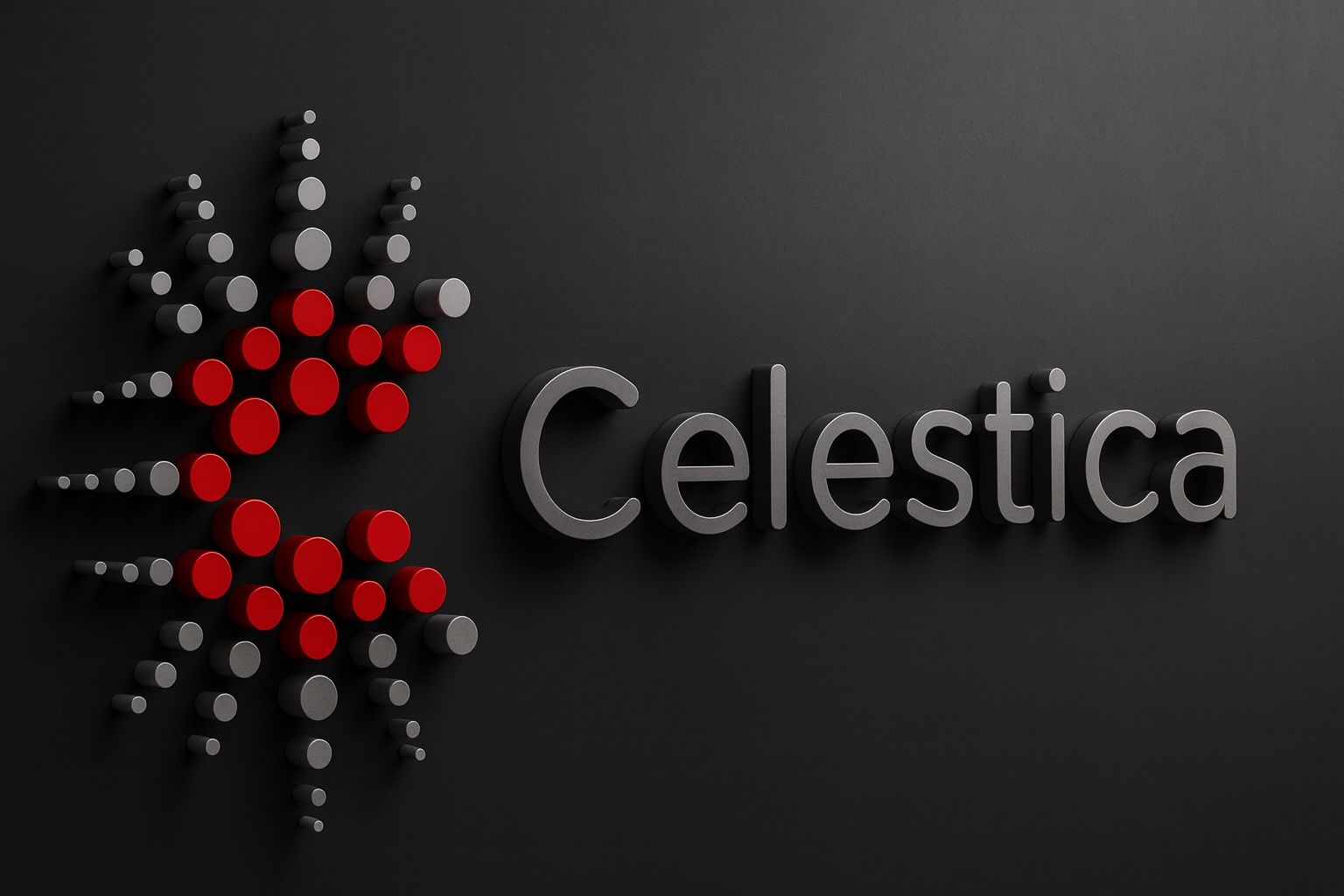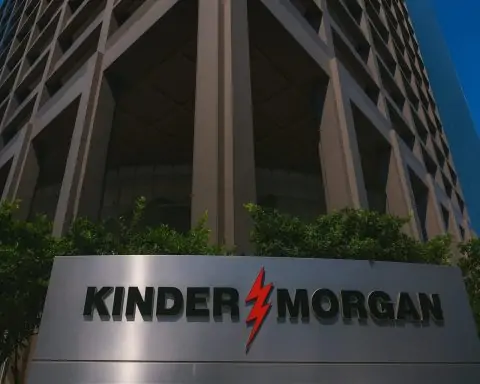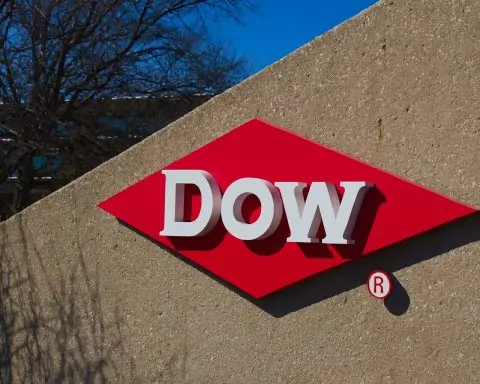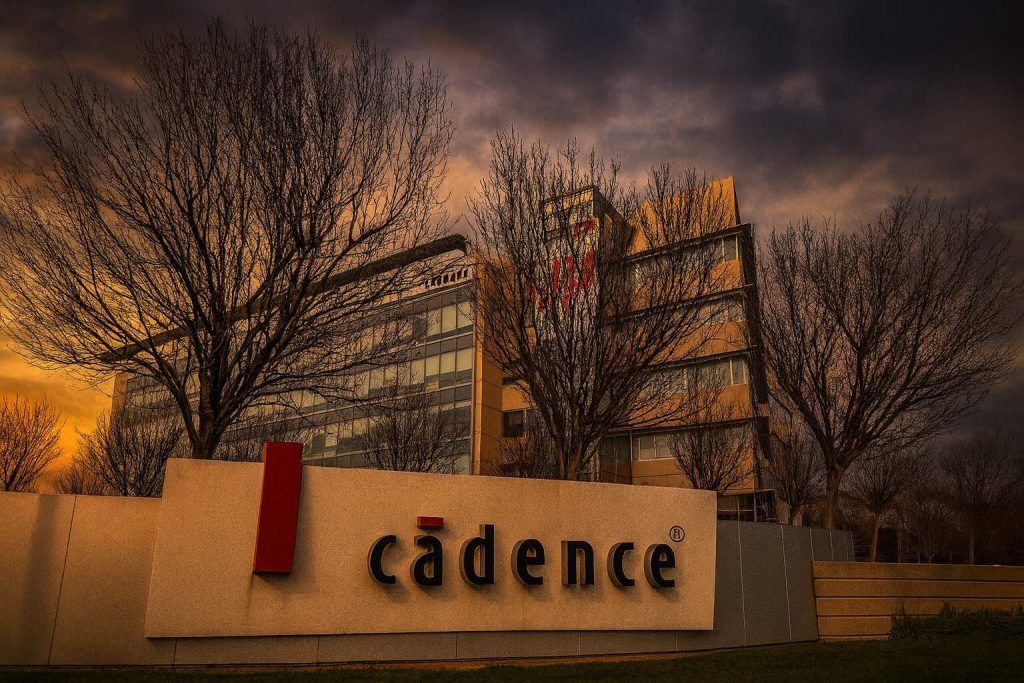- Q3 Blowout & Raised Outlook: Celestica Inc. (NYSE: CLS) reported third-quarter 2025 revenue of $3.19 billion (+28% YoY) and adjusted EPS of $1.58 (+52%), topping estimates and exceeding its own guidance [1]. The company hiked its 2025 forecast to $12.2 billion revenue (from $11.55B) and $5.90 EPS, citing surging demand from AI data center customers [2] [3].
- Stock Soars Triple Digits: CLS stock has exploded over 220% year-to-date in 2025 and ~316% in the past year, vastly outperforming the S&P 500 [4]. Shares jumped another 8–13% after hours on the Q3 beat [5], adding to a rally that’s made Celestica one of this year’s top-performing stocks [6].
- AI Infrastructure Boom: Celestica’s growth is fueled by booming orders for AI and cloud infrastructure. Its Connectivity & Cloud Solutions segment (servers, storage, networking) saw revenue surge 43% YoY in Q3, with hardware platform sales up 79% [7]. Management notes “significant investments in AI data center infrastructure” by major hyperscale customers driving a strong outlook into 2026 [8] [9].
- Strategic Wins & Products: The company is leveraging its engineering edge to meet demand. It just launched two 1.6-terabit Ethernet switches for AI/ML clusters – doubling capacity of its prior 800G solutions [10]. Industry analysts say Celestica “has already proven [its] ability to meet the incredible demand of AI infrastructure” [11], earning it market-share leader awards in high-speed networking.
- Analyst Bulls vs. Bears: Wall Street is split on what’s next. Goldman Sachs initiated coverage with a Buy and a hefty $340 target, seeing Celestica as a prime beneficiary of the AI data center build-out [12]. Other firms have raised targets (e.g. CIBC to $315 [13], BMO to $300) on Celestica’s hyperscaler partnerships [14]. Yet skeptics warn the stock’s valuation (≈58× earnings [15]) already reflects its “AI-fueled” growth, urging caution of a potential pullback [16].
Q3 Earnings Fuel a Fresh Surge in Celestica Stock
Toronto-based Celestica – traditionally an electronics manufacturing services (EMS) contractor – delivered blockbuster Q3 2025 results, accelerating its transformation into an AI infrastructure powerhouse. Revenue for the quarter hit $3.19 billion (well above the $3.02B expected) while adjusted profit was $1.58 per share (vs ~$1.47 expected) [17]. CEO Rob Mionis highlighted that both sales and EPS exceeded the high end of guidance, with operating margins at record levels [18]. Bolstered by this performance, Celestica raised its full-year outlook significantly, now targeting 2025 sales of $12.2B (+~34% YoY) and EPS of $5.90 [19]. It even issued an early 2026 forecast for $16.0B revenue and $8.20 EPS, implying ~30% growth each year [20] – an unusually bullish sign two years out. Management attributed these upgrades to “strong results to date and a demand environment that continues to strengthen, particularly in AI data center infrastructure” [21] [22].
Investors reacted swiftly. Celestica’s stock, which closed around $296 on Oct. 24 [23], spiked in after-hours trading once the earnings hit the wires. Within minutes, CLS was up about 11–13% post-market [24] [25]. The rally puts the share price near all-time highs around the $300+ level, a stunning rise from roughly $80 at the start of the year. As 24/7 Wall St. noted, Celestica has surged 227% year-to-date in 2025, ranking among the market’s top performers [26]. In fact, since being identified as an “AI stock” in mid-2024, CLS has rocketed over 500% in 18 months [27]. This momentum has often defied broader market pullbacks – on down days for tech, Celestica has “stood out” with pockets of strength as investors flock to its AI-centric story [28].
AI Data Center Boom Drives Explosive Growth
Celestica’s remarkable run is rooted in the AI infrastructure boom. The company has positioned itself as a key supplier of hardware to hyperscalers (the likes of Amazon, Google, Microsoft, and now OpenAI – massive cloud players building out AI supercomputing centers). Its Connectivity & Cloud Solutions unit, which provides data center servers, storage, and networking gear, now makes up about 72% of total revenue [29]. In Q3, this segment’s revenue leapt 43%year-over-year to $2.41B, far outshining the more modest (and even declining) trends in legacy segments [30]. Notably, Celestica’s Hardware Platform Solutions – custom-built server and rack solutions for data centers – grew a staggering 79% [31], reflecting huge orders for AI servers and networking equipment.
According to the company, its “largest customers” are making significant investments in AI data center infrastructure, which is directly translating into Celestica’s record sales [32]. The CEO pointed to strength in AI-related demand continuing into 2027 [33], suggesting this is not a short-term spike but a multi-year upgrade cycle. In practical terms, hyperscalers are racing to upgrade from 400G to 800G and now 1.6T interconnects in their cloud networks [34], and Celestica is one of the firms enabling that behind the scenes. “We view Celestica as a winner among the growing AI data center build-out,” one Seeking Alpha analyst noted, given its unique position as an original design manufacturer (ODM) that can quickly scale production of cutting-edge hardware for these clients [35].
This AI-led demand surge has more than offset softness in Celestica’s smaller segments (like industrial and aerospace). The Advanced Technology Solutions (ATS) division actually saw a 4% revenue dip amid weakness in non-tech end markets [36]. But investors are happy to overlook that for now, as the AI-fueled Connectivity/Cloud business becomes Celestica’s main growth engine. Even when broader growth stocks wavered on macro concerns, Celestica’s AI narrative kept its stock resilient – “underscoring pockets of relative strength” in risk-on trades [37].
Strategic Moves in AI Infrastructure
Celestica isn’t just riding the wave passively; it has been making strategic moves to solidify its foothold in AI infrastructure. A recent highlight was the introduction of two high-end data center switches on October 10. Branded the DS6000 and DS6001, these network switches are 1.6 terabit Ethernet devices purpose-built for AI and machine learning clusters [38] [39]. They represent a doubling of capacity compared to Celestica’s previous 800G solutions, thanks to Broadcom’s latest Tomahawk 6 chipset that delivers up to 102.4 Tbps of switching throughput [40] [41]. In plain terms, each new switch can funnel twice the data of its predecessor, an important leap for handling the massive data flows in AI supercomputers.
“The introduction of our new 1.6T switches marks a significant milestone…designed specifically to meet the demands of AI/ML clusters,” said Celestica’s SVP of Portfolio Solutions [42]. The switches come in air-cooled and hybrid-cooled variants to suit modern data center needs [43], and Celestica is contributing their design to the open-source community (OCP) – a nod to its collaborative approach with big cloud players. A Broadcom executive praised how Celestica harnessed the Tomahawk 6 to deliver “groundbreaking switches” optimized for next-gen AI clusters [44]. Industry analysts also lauded the move: “Celestica’s new 1.6T switches showcase the innovation possible…Celestica has already proven their ability to meet the incredible demand of AI infrastructure,” noted Sameh Boujelbene of Dell’Oro Group, citing Celestica’s award-winning leadership in high-speed AI networking [45].
These product advances underscore Celestica’s evolution from a low-margin contract manufacturer into a cutting-edge hardware player. The company has also struck strategic partnerships – for example, working closely with Broadcom on networking gear and reportedly serving as a key manufacturing partner for Google’s cloud hardware [46]. There is even speculation (from Goldman Sachs and others) that Celestica could benefit from OpenAI’s plans to build AI data centers [47]. In other words, if OpenAI (creator of ChatGPT) and others move to set up their own AI supercomputing infrastructure, Celestica might win lucrative contracts to supply the racks, enclosures, and high-speed interconnects for those facilities [48]. Such prospects have big banks and investors excited about Celestica’s future pipeline.
Internally, Celestica is scaling up to support this growth. The company will host a 2025 Investor and Analyst Day in New York on Oct. 28, where leadership is expected to detail its AI-focused strategy and capacity expansion plans [49]. Key topics may include how Celestica will meet its ambitious 2026 targets and continue to manage supply chain constraints (a critical issue when ramping complex hardware) as well as any new partnerships in the works. Given the strong momentum, analysts anticipate more color on how Celestica can maintain its “continued strength of execution” into 2027 and beyond [50].
How Celestica Stacks Up Against Competitors
Celestica’s stock surge and AI pivot inevitably invite comparisons to peers in both the EMS sector and the broader AI hardware space. In the traditional EMS arena – which includes firms like Jabil (JBL), Flex (FLEX), and Sanmina (SANM) – Celestica has suddenly broken from the pack. Over the last 12 months, Celestica shares have skyrocketed ~330%, vastly outpacing Jabil’s ~69% gain [51] and Flex’s ~37% rise [52]. This outperformance reflects Celestica’s unique leverage to the AI trend. While Celestica expects double-digit sales and profit growth in 2025, some rivals are struggling with slower markets. For instance, Jabil’s revenue is actually projected to decline next year amid challenges like electronics tariffs [53]. Even Flex – which has a sizable data center business – forecasts only about 0.4% sales growth in 2025 [54], a far cry from Celestica’s ~13%+ outlook.
That said, Celestica’s peers are racing to catch up in the high-growth areas. Flex Ltd. reported that its cloud and data center power business expanded 50% year-over-year in fiscal 2025, and it anticipates continued strong growth in that segment into 2026 as AI drives demand for power solutions [55]. This suggests the AI infrastructure boom is lifting multiple boats in the EMS industry, not just Celestica. Large contract manufacturers like Foxconn (Hon Hai) and Pegatron are also vying for hyperscaler hardware orders, although those firms aren’t as transparent since they’re not U.S.-traded. Sanmina recently noted strength in its computing segment (it even won an AI server assembly deal with a chipmaker), and its stock has jumped around 60% this year – impressive, but still nowhere near Celestica’s 200%+ leap.
In the broader AI hardware ecosystem, Celestica’s success is sometimes compared to specialized networking and server companies. Arista Networks (ANET), a leading data center networking vendor whose switches are ubiquitous in AI clusters, has seen its stock climb on the AI wave as well. At around a $190 billion market cap, Arista is much larger, but Celestica’s rapid appreciation has started to converge valuations. Currently Celestica trades around 40× forward earnings, approaching Arista’s ~44× multiple [56]. Both are priced as high-growth “ picks and shovels” of the AI gold rush. Another name is Super Micro Computer (SMCI), a server manufacturer that soared earlier on AI server demand – though SMCI’s shares have been volatile, and Celestica’s year-to-date run now eclipses SMCI’s. Compared to NVIDIA (the GPU supplier fueling the AI craze), Celestica is a much more niche play – but interestingly, Celestica’s 2025 stock gain has even surpassed NVIDIA’s, as investors seek the “hidden” beneficiaries of AI CapEx.
The bottom line is that Celestica has differentiated itself from the average EMS contractor by diving into higher-value, higher-margin products for AI and cloud. This has put it in a sweet spot that few traditional manufacturers have matched so far. Its gross margin has climbed above 11% [57] (notably higher than Jabil’s ~9%), hinting at the richer mix of products it now delivers. Still, competition looms: industry giants like Foxconn and Flex are formidable, and if the AI spending cycle slows, all these suppliers could feel a pinch in utilization. For now, though, Celestica enjoys a relative scarcity value as one of the purest plays on AI infrastructure growth in North America, which helps explain its premium valuation.
What’s Next: Bullish and Bearish Outlooks
With Celestica’s stock up so sharply, what comes next? Expert opinions diverge between bull and bear camps, largely hinging on how sustainable the AI hardware boom is and whether Celestica’s valuation is warranted.
💹 Bullish Case: Optimists argue that Celestica is at the forefront of a multi-year secular growth cycle. The company’s own guidance and customer indications suggest AI-driven orders will remain strong through 2026 and beyond [58], as cloud giants roll out successive generations of AI servers and networks. Goldman Sachs, which just began covering CLS with a $340 price target, believes Celestica’s execution and engineering know-how give it an edge to keep winning hyperscaler contracts [59]. Goldman projects Celestica’s revenue to soar from ~$9.6B in 2024 to $21.4B by 2029 (a 17% CAGR), with earnings growing even faster at 25% annually [60]. In their view, Celestica’s recent ~150% stock jump (YTD) is justified by fundamentals, as the company’s valuation is catching up to peers exposed to AI infrastructure [61]. Bulls also point to the flurry of analyst upgrades: for example, BMO Capital upped its target to $300 after noting Celestica’s strategic partnership with Broadcom and potential OpenAI-related wins [62]. Aletheia Capital went even further, issuing a street-high $350 target, highlighting Celestica’s role as a “key manufacturing partner” for Google and its likely participation in new AI projects [63]. In short, the bullish thesis is that Celestica’s earnings will continue to surprise to the upside, eventually “growing into” its rich valuation. If management hits $8.20 EPS in 2026 as forecasted [64], even the current ~$300 stock price would be a forward P/E of ~37× – not unreasonable for the kind of growth and market position Celestica could have. Any further AI infrastructure expansions (e.g. an OpenAI data center build-out contract) would be pure upside. Thus, bulls see more room to run, with some calling CLS a top pick to play the AI arms race in the data center [65].
🔻 Bearish Case: On the other hand, skeptics caution that much of the good news is already priced in. After a 300%+ share price run-up in a year [66], Celestica’s stock valuation looks full by many metrics. It trades around 58× trailing earnings and over 20× forward EBITDA [67] [68], rich for what is still fundamentally a manufacturing business with mid-single-digit margins. While Celestica’s P/E is comparable to some high-flying tech hardware peers, it is much higher than traditional EMS rivals like Jabil or Flex (which trade in the mid-teens P/E) [69]. Any stumble in execution or a moderation in growth could trigger a sharp correction from these heights. A recent Seeking Alpha analysis titled “Celestica’s Peak? Time for a Pullback” argued that the stock’s tremendous AI-fueled EPS gains are now “reflected in its valuation,” implying limited upside unless new catalysts emerge [70]. Bears also note that the electronics supply chain is cyclical and fickle. If hyperscalers pause their spending or switch to alternative suppliers (e.g. in-house manufacturing or different ODMs), Celestica could see demand ebb. The company’s backlog visibility isn’t indefinite; tech capex can be lumpy. Moreover, competition is intensifying – for instance, if Foxconn decides to aggressively pursue AI server assembly contracts, its sheer scale could pressure pricing across the industry. Margin pressures are a concern as well: Celestica’s cutting-edge products require high R&D and capital investment, which could weigh if revenue growth slows [71]. There are also geopolitical risks (Celestica operates globally with facilities in North America, Europe, and Asia); trade restrictions or export controls on AI tech could indirectly impact its business. In summary, the bearish view is that Celestica’s stock may have run too far, too fast – any hint of an AI spending slowdown or an earnings miss could spark a significant pullback from the current elevated levels.
Conclusion: Bracing for the Next Chapter
Celestica’s dramatic ascent in 2025 – from a little-known mid-cap to a nearly $35 billion market star riding the AI revolution – has been nothing short of remarkable. The latest quarter affirmed the company’s transformation, with record earnings and an upbeat forecast that few could have imagined a couple of years ago. Celestica is now firmly positioned as an “arms dealer” of the AI economy, supplying the critical building blocks (servers, switches, racks) that make AI supercomputers possible. This strategic pivot has earned it both enthusiastic believers and cautious observers.
Looking ahead, investors will be watching a few key factors. First, Celestica’s 2025 Investor Day (Oct. 28) will be scrutinized for details on its growth strategy – any new customer wins or technology roadmaps disclosed there could move the needle. Second, the broader macro environment: demand from cloud giants needs to remain robust to support Celestica’s lofty 2026 targets. Any signs of order delays or digestion in AI investments could test the stock’s resilience. On the flip side, continued blowout results or new contract announcements (perhaps an OpenAI-related deal or expansion with existing customers) could validate the bulls and push the stock even higher.
For the public and investors with no finance background, the takeaway is that Celestica has surfed the AI wave to incredible heights, becoming one of 2025’s standout success stories. Its stock has delivered eye-popping returns as the company pivoted to where the growth is – artificial intelligence infrastructure. Whether those gains will continue or take a breather may depend on how the next chapters of the AI boom play out. For now, Celestica has the market’s attention, proving that even a once low-margin manufacturing firm can reinvent itself in the age of AI – and send its shareholders on a thrilling ride in the process.
Sources: Financial releases and analysis from Celestica and GlobeNewswire [72] [73]; Market commentary from 24/7 Wall St [74] [75] and ts2.tech [76]; Goldman Sachs and analyst insights via Investing.com [77] [78]; Industry perspective from Dell’Oro Group via GlobeNewswire [79]; Comparative data from Zacks/Nasdaq [80] [81] and Alpha Spread [82]; Associated Press and Seeking Alpha news on Celestica’s earnings and stock performance [83] [84].
References
1. 247wallst.com, 2. www.globenewswire.com, 3. 247wallst.com, 4. ts2.tech, 5. 247wallst.com, 6. 247wallst.com, 7. www.globenewswire.com, 8. www.globenewswire.com, 9. 247wallst.com, 10. www.investing.com, 11. www.globenewswire.com, 12. www.investing.com, 13. www.marketbeat.com, 14. www.investing.com, 15. www.investing.com, 16. stockanalysis.com, 17. www.sfchronicle.com, 18. 247wallst.com, 19. www.globenewswire.com, 20. www.globenewswire.com, 21. 247wallst.com, 22. 247wallst.com, 23. finance.yahoo.com, 24. 247wallst.com, 25. 247wallst.com, 26. 247wallst.com, 27. 247wallst.com, 28. ts2.tech, 29. tradertimes.com, 30. www.globenewswire.com, 31. www.globenewswire.com, 32. www.globenewswire.com, 33. www.globenewswire.com, 34. www.fool.com, 35. www.investing.com, 36. www.globenewswire.com, 37. ts2.tech, 38. www.globenewswire.com, 39. www.globenewswire.com, 40. www.globenewswire.com, 41. www.globenewswire.com, 42. www.globenewswire.com, 43. www.globenewswire.com, 44. www.globenewswire.com, 45. www.globenewswire.com, 46. www.investing.com, 47. tradertimes.com, 48. tradertimes.com, 49. www.stocktitan.net, 50. 247wallst.com, 51. www.alphaspread.com, 52. www.nasdaq.com, 53. finance.yahoo.com, 54. www.nasdaq.com, 55. www.nasdaq.com, 56. www.investing.com, 57. www.alphaspread.com, 58. www.globenewswire.com, 59. www.investing.com, 60. www.investing.com, 61. www.investing.com, 62. www.investing.com, 63. www.investing.com, 64. www.globenewswire.com, 65. 247wallst.com, 66. ts2.tech, 67. www.investing.com, 68. www.nasdaq.com, 69. www.nasdaq.com, 70. stockanalysis.com, 71. www.nasdaq.com, 72. www.globenewswire.com, 73. www.globenewswire.com, 74. 247wallst.com, 75. 247wallst.com, 76. ts2.tech, 77. www.investing.com, 78. www.investing.com, 79. www.globenewswire.com, 80. www.nasdaq.com, 81. www.nasdaq.com, 82. www.alphaspread.com, 83. www.sfchronicle.com, 84. seekingalpha.com









